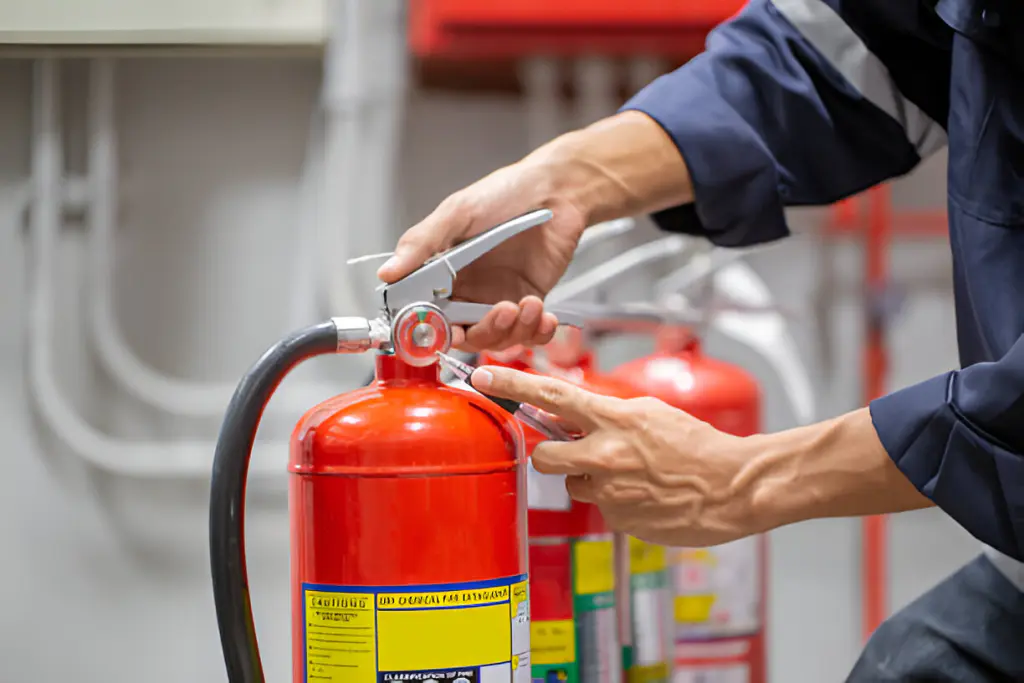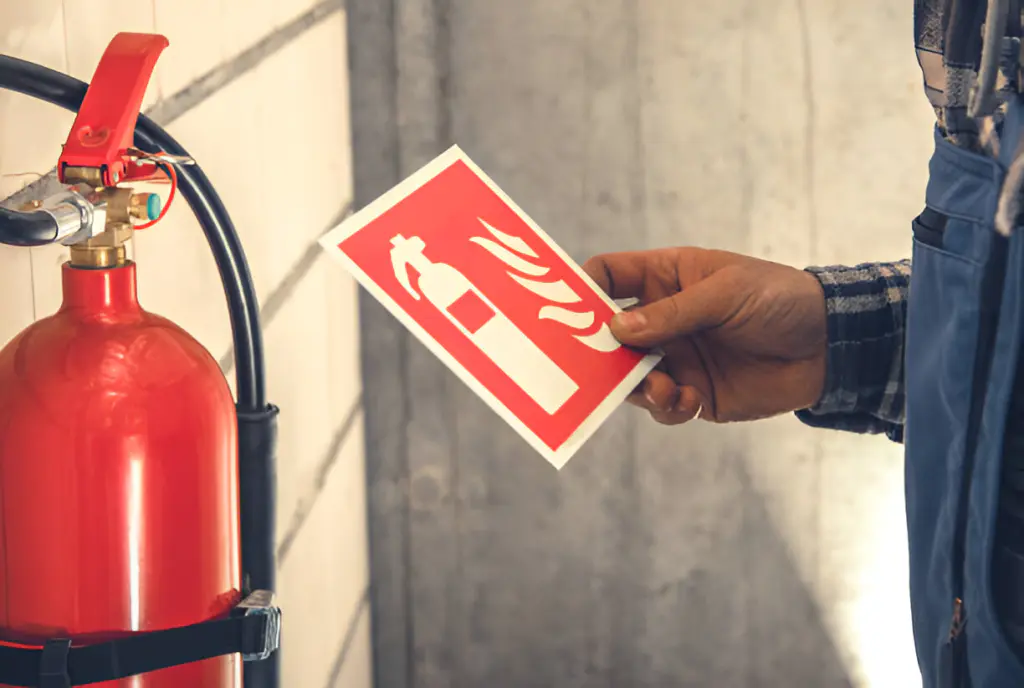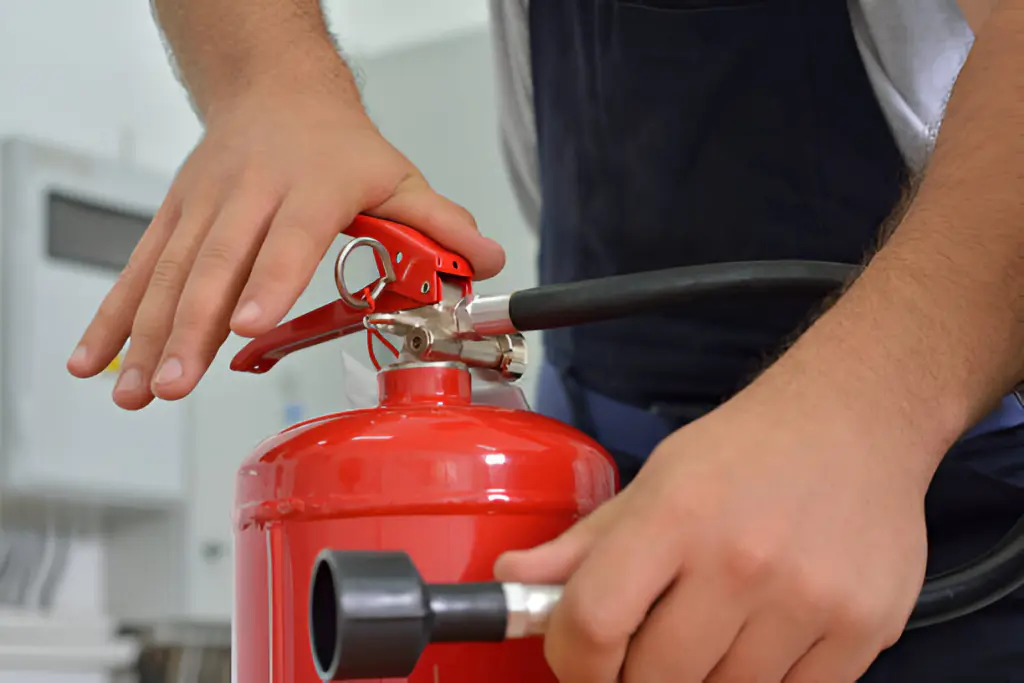You’ve probably walked past a fire extinguisher today, but have you ever wondered if it’s ready to perform when you need it most? Conducting regular fire extinguisher surveys is more than a due diligence task; it’s a critical component of ensuring safety and meeting strict regulatory standards. By evaluating the placement, condition, and accessibility of your extinguishers, you’re not only aligning with the law but also proactively protecting your premises and people. Now, consider the potential risks lurking in overlooked corners. Are you confident that your current fire safety measures are up to scratch, or is it time to take a closer look? Let’s understand Fire Extinguisher Surveys Ensuring Safety and Regulatory Compliance.
Importance of Fire Extinguisher Surveys
Fire extinguisher surveys are crucial for ensuring safety in any building. You’re tasked with not only maintaining compliance but also fostering a culture where safety is paramount.
These surveys are a fundamental component of a robust fire safety strategy, integrating risk assessment, fire prevention, and emergency preparedness.
During your survey, you’ll assess the adequacy, functionality, and accessibility of extinguishers. This isn’t merely about checking dates and seals; it involves a detailed examination to ensure that equipment maintenance is up to par and that each unit is suitable for the specific hazards present in various building zones.

You’re looking for signs of wear, corrosion, or damage that could impair functionality.
Your survey also plays a critical role in hazard identification. By evaluating the environment and the potential fire risks, you can determine whether the current fire extinguishers are adequate or if additional units are necessary. This is where your expertise in safety audits becomes invaluable.
Building a compliance culture means ingraining safety practices at every level of the organization. Your surveys educate and remind staff of the vital role fire extinguishers play in fire safety and emergency preparedness, ensuring everyone is equipped and empowered to act swiftly and effectively in case of a fire.
Regulatory Framework Overview
Navigating the complex landscape of regulations surrounding fire extinguisher compliance is essential for maintaining safety standards within any facility. You must understand the various regulatory bodies involved, as they enforce the compliance standards and legal obligations that dictate your actions.
These bodies, which include national and local authorities, ensure adherence to fire codes and industry guidelines through rigorous enforcement mechanisms. Compliance standards aren’t mere suggestions but binding requirements. They’re designed to minimize risks, safeguarding both property and lives.
A critical aspect of adherence involves regular safety audits and risk assessments, which identify potential hazards and ensure that fire extinguishers are capable of performing in emergencies. These audits are comprehensive evaluations of your fire safety protocols, ensuring that every extinguisher meets the specific requirements outlined in the fire codes.
Your legal obligations extend beyond the mere acquisition and installation of fire extinguishers. You’re required to maintain them per the strict guidelines prescribed by regulatory authorities.
Failure to comply not only jeopardizes safety but also exposes you to legal repercussions. Therefore, staying informed about current regulations and continuously evaluating your compliance strategy is imperative for legal and practical preparedness.
Survey Preparation Steps
To effectively prepare for a fire extinguisher survey, you should first compile a comprehensive list of all fire extinguishers within your facility. This inventory should include each unit’s location, type, size, and last inspection date.

You’ll need this data to ensure that no device is overlooked and that each extinguisher is accessible and functional.
Next, familiarize yourself with the required survey tools. Typically, this includes inspection tags, a clipboard or digital device for record-keeping, and a checklist aligned with the latest regulatory standards.
Ensure these tools are ready and functional before the survey commences to streamline the process.
Determining the appropriate survey frequency is crucial. Regulatory bodies often prescribe minimum standards but consider the specific risks associated with your environment.
High-risk areas may necessitate more frequent surveys to mitigate potential hazards effectively.
Common Compliance Issues
Understanding common compliance issues is crucial when managing fire extinguisher maintenance. You must be vigilant about the inspection intervals that are mandated by regulations. Often, businesses falter by either elongating these intervals or missing them entirely. Regularity in checks ensures that extinguishers are operational and accessible when required, minimizing potential fire hazards.
Another frequent oversight involves failing to adapt to updated standards that address newer risks or technology. As you maintain or upgrade your fire safety equipment, you must stay informed about these changes. Non-compliance not only leads to legal repercussions but also compromises safety.
Training is often underestimated. Ensuring that your staff is knowledgeable about how to use fire extinguishers effectively is as crucial as the mechanical readiness of the devices themselves. Inadequate training can lead to mishandling during emergencies, aggravating the situation rather than mitigating it.
Lastly, proper documentation is vital. It’s not enough to perform all the required actions; you must also record them meticulously. This documentation serves as proof of compliance and can be critical during insurance claims or regulatory audits.
Don’t overlook this aspect; thorough record-keeping can save you from severe penalties and facilitate a quicker resolution during reviews.
Survey Execution Techniques
When conducting fire extinguisher surveys, you must begin with a clear plan that outlines every step of the process. You must ensure each aspect of the survey is meticulously accounted for, from initial scheduling to the final assessment of equipment.

Utilize established survey methodologies to structure your approach, ensuring it’s both systematic and comprehensive.
Your next step involves technology integration, which is crucial for enhancing accuracy and efficiency. Employ modern tools such as digital checklists and mobile applications that facilitate real-time data capture and analysis.
These technologies not only streamline the process but also minimize human error, allowing for a more reliable assessment of compliance with safety regulations.
As you execute the survey, you must adhere to the highest standards of precision. Each fire extinguisher must be inspected for the validity of tags, proper placement, and operational readiness.
Ensure you’re equipped with the necessary tools to perform detailed checks. This might include digital gauges for pressure checks and scanners for barcode verification.
Understanding Survey Findings
After meticulously executing your survey using the latest technological tools and detailed methods, you’ll now focus on interpreting the results. The essence of survey analysis lies in decoding what the data tells us about the current state of fire extinguisher compliance and readiness within your facility.
| Aspect | Findings | Interpretation |
|---|---|---|
| Compliance Rate | 85% | High but room for improvement |
| Expiry Dates | 20% expired | Immediate attention required |
| Location Accessibility | 10% poorly accessible | Potential delays in emergency response |
| Maintenance Records | 15% incomplete | Needs systematic updates and review |
| Staff Training Levels | 50% adequately trained | Half of the workforce requires retraining |
Each column in the table sheds light on specific areas that demand attention. For instance, the “Expiry Dates” column signals a critical need for updating equipment. Similarly, the “Staff Training Levels” highlights a significant gap in readiness, suggesting that half of your personnel are not fully prepared to handle emergencies effectively.
In your findings interpretation, look beyond the numbers to understand the implications for safety and compliance. This analysis isn’t just about meeting regulatory benchmarks—it’s about ensuring that every individual in your facility is protected and empowered to respond effectively in an emergency.
Future Trends in Fire Safety Compliance
As fire safety technology evolves, so too must the regulations and standards that govern their implementation. You’ll see this reflected in the integration of emerging technologies and the adaptation of regulatory frameworks.
Predictive analytics, for example, are set to revolutionize how risk assessments are conducted, enabling you to anticipate fire hazards before they manifest. This proactive approach is supported by the latest in safety innovations, which not only enhance protection but also ensure that sustainability practices are met.
Furthermore, expect significant regulatory updates that demand compliance with these advanced methodologies. These updates will necessitate a shift towards more dynamic and responsive strategies in fire safety management.
Compliance automation will play a critical role here, streamlining processes and reducing the human error factor in ensuring that all standards are consistently met.
Data integration will further empower you, offering a cohesive overview of fire safety metrics across various systems. This won’t only simplify compliance but also enhance the effectiveness of your fire safety protocols.
As you move forward, staying abreast of these trends is crucial. They’re not merely adjustments to existing practices but are transformative shifts that redefine the landscape of fire safety compliance.
Conclusion
You’ve learned the critical role that fire extinguisher surveys play in ensuring both safety and compliance. By diligently preparing, executing, and documenting these surveys, you ensure your building meets stringent regulatory standards and mitigates fire risks effectively. Remember, training your staff on proper extinguisher usage is equally vital. Stay ahead by adopting future trends in fire safety compliance, guaranteeing a safer environment for everyone. Never underestimate the power of a well-conducted fire extinguisher survey in safeguarding lives and property.









